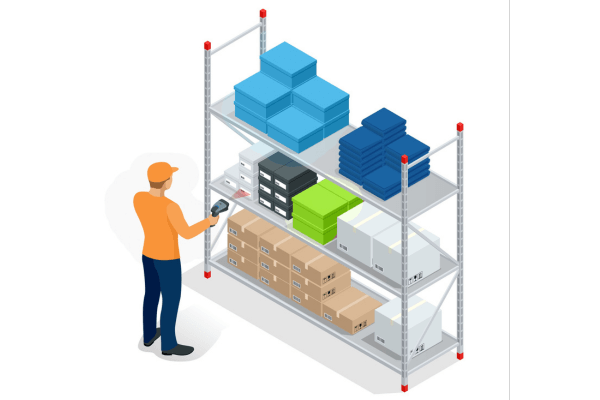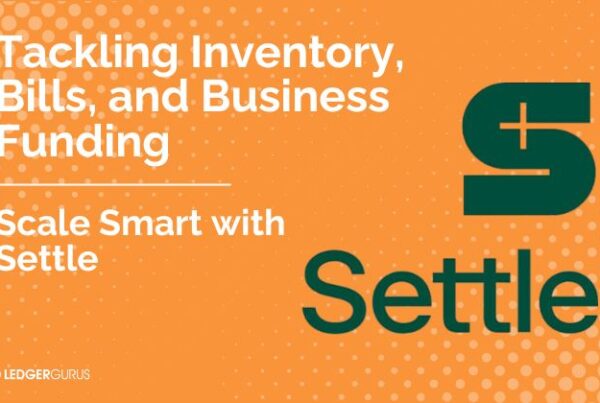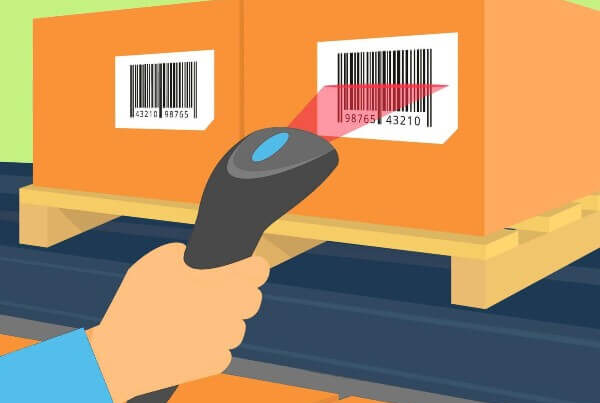Ah, inventory! The backbone of every ecommerce business and often the source of a few (or many) headaches.
Managing those stacks of raw materials and finished goods and then ensuring good inventory control can sometimes feel like you’re trying to solve a Rubik’s Cube while riding a unicycle.
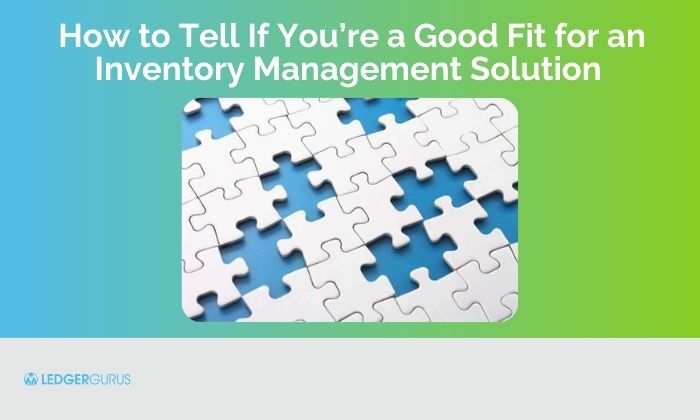
Inventory management software (IMS) may be the answer you’re looking for.
In this article, you’ll learn:
- Indicators that your business may be ready for an IMS
- The importance of data accuracy and real-time tracking
- How to assess ROI and cost considerations
- How to select the right IMS for your business
- How to get the training and support you need
- Advice and recommendations when considering and IMS
Let’s get into it.
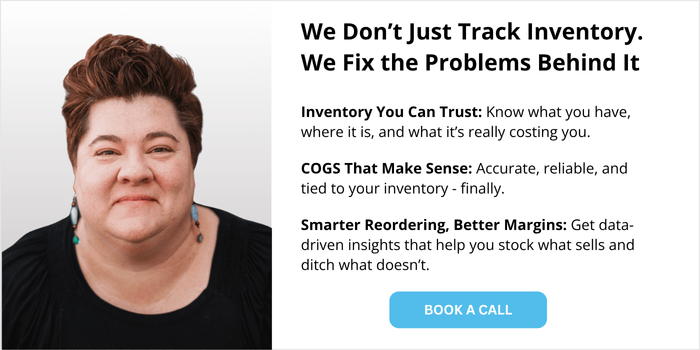
Key Takeaways
- Why Inventory Management Matters – Effective inventory management ensures visibility, accuracy, and control over stock levels, costs, and workflows.
- Signs You Need an Inventory Management Solution
- How to Choose the Right Inventory Management Software (IMS)
- Importance of Data Accuracy & Real-Time Tracking – Real-time tracking ensures up-to-date inventory status and prevents errors like negative inventory or zero COGS.
- Steps for Data Accuracy Before & After IMS Implementation
Let’s start with a caveat, though. An IMS is not a good fit for every business. It requires consistent and successful process execution to produce good data. The average implementation will cost $20K, and the data will be garbage within six months if you don’t have good processes.
So, how can you tell if your business is a good fit for an IMS?
We’ll show you.
Inventory Management Goals for eCommerce Businesses
Sometimes it can feel like effective, efficient inventory management is a pipedream.
For instance, in a perfect world, you’d know where all your inventory is and the value of it. You wouldn’t need a magnifying glass and detective hat to track inventory transfers to know where it’s all going as it moves through your system.

You’d be able to easily manage workflows, like bills of materials, and track costs through those workflows.
You’d have a good eye on your stock levels, and know what to order, when to order it, and how much of it you need.
You’d be able to successfully decrement your inventory as it comes off of your sales channels.
You’d understand where you’re at with vendor deposits, as well as what has and hasn’t been paid for. You’d also know what inventory has and hasn’t been received.
Is that your reality yet?
No? Don’t worry, we can show you how to get there.
Key Indicators That a Business May Benefit from an Inventory Management Solution
If your operations resemble a wild west show more than a well-oiled machine, it might be time to consider an inventory management solution.
Some of the indicators we see in our clients when they come to us asking for inventory help are:
- Lack of visibility into everything mentioned above
- Big inventory adjustments – This usually indicates there is an operational problem around inventory.
- Significant time spent trying to track inventory-related things
- Poor-performing inventory turnover
- COGS that are highly volatile
- Sales volumes over $1M
- High product complexity – Having a bill of materials, kits & bundles; manufacturing of any kind; products sold in many SKUs, sizes and/or colors
- Order fulfillment challenges – Not being able to get orders out on time, lots of errors around the fulfillment process, orders that take a long time because the process is so complex, using multiple warehouses, drop shipping
- Wanting to scale, but you can’t because of confusion and chaos around inventory
These are just a few signs that your business might just be ready for an inventory management solution.
How to Select the Best Inventory Management Software for Your Business
Choosing the best inventory management software for your business requires evaluating scalability, understanding essential features and functionality, and considering other necessary criteria.
The most valuable piece of advice we can give you is to not rely only on salespeople to make the decision of which IMS to choose.
Seek the wisdom of experts. You need to talk to someone who knows the tool and knows it well. Preferably this is someone besides the software company itself. You need an expert in the area, not just a salesperson for the tool.
Evaluate Scalability to Ensure the IMS Meets Future Growth Needs
Make sure that the software meets not only your current needs but is also scalable to grow and expand with your business.
- Flexibility – Can it adapt to increasing data and transaction volumes?
- Features – Can the IMS accommodate additional features or modules to support expanding operations?
- Integration capabilities – Can it seamlessly integrate with other systems as your business grows?
- User accessibility – Can it support an increasing number of users without performance issues?
- Technical support & upgrades – Does the IMS provider offer robust support and regular updates to meet evolving business needs?
- Customization – Does the system allow for customization to adapt to changing business processes and requirements?
Essential Features and Functionality for eCommerce Businesses
There are two specific features that are essential for ecommerce businesses:
- Channel integration – If it doesn’t integrate with your specific channel/s, walk away.
- Cloud-based – Your business is cloud-based; your IMS should be, too.
Other Valuable Criteria to Consider
Other criteria a business owner should use to choose the right IMS software:
- Whether you manufacture or not
- Whether you handle your own fulfillment or not
- Whether you need to create bundles
- If you have good visibility into your 3PL
- Whether or not you have EDI
- Whether or not you need point of sale
- Whether or not you need a wholesale portal
- Whether or not your financial software integrates
Does this tool have the functionality you need?
The Importance of Data Accuracy and Real-Time Tracking in eCommerce Inventory Management
In the world of ecommerce, data is king. It’s literally everything.
Ensuring data accuracy and having real-time tracking can transform your inventory management from a guessing game into a strategic, well-planned system. This impacts not only your operations, but also your finances, one leading directly into the other.
But how does one ensure this accuracy before and after implementing an IMS tool? And are you prepared to do it?
What Businesses Need to Do to Ensure Data Accuracy Before and After an IMS Implementation
What Needs to Happen Before Implementation
First and foremost, an inventory count is not just essential; it’s the bread and butter of implementing an IMS on the right foot. If you don’t do this, you’re already starting off with bad data, which will only get worse as times goes on.
The next step is building product costs that come from an informed place, not just from guessing. We’ve got a lot of resources to help you with this:
- How to Establish Your Inventory Costs for an Accurate Product Cost Catalog
- 3 Inventory Costing Methods | Pros, Cons, and How to Choose One for Your eCommerce Business
- Inventory and COGS Template
You need to know what’s currently in open status, meaning which purchase orders still need to be received and which sales orders still need to be shipped.
You need to understand where your cutoff is for transactional completeness. This means establishing a specific point in time or deadline after which no more inventory transactions (like purchases, sales or transfers) are recorded before going live with the IMS.
Lastly, you need to thoroughly understand your bills of materials that are building different products, bundles or SKUs, as well as getting super clear on units of measure.
This may seem overwhelming and a lot of work, but it is crucial to START with accurate numbers, which will make CONTINUING to get accurate numbers possible.
What Needs to Happen After Implementation
To maintain accurate figures post-implementation, ensuring prompt and thorough data input is crucial.
That means that purchase orders (POs) are being entered in immediately. Inventory must also be received in a timely manner.
Actually, timeliness in all inventory-related activities is very important. If not, then sales orders coming into the IMS will result in negative inventory and zero COGS (cost of goods sold) because the inventory was never shown as received, so there are no costs in there at all.
It’s important to make sure your inventory value is tying out between your accounting software and your IMS. This means that you’re ensuring the data regarding inventory in the accounting system is accurate and reconciles with actual physical inventory.
Make sure that sales activity from your channels is completely captured in the IMS. Also, make sure that you’re capturing any inventory that’s moving, but not related to sales, such as inventory adjustments, product giveaways, damaged goods, etc. There needs to be a way for all of that to be captured.
Another activity that must be done in a timely way is cycle counts. Consider ALL the inventory that your company owns. This is important for making any necessary adjustments to keep the data in the IMS accurate.
How to Achieve Data Accuracy
Real-time tracking aids data accuracy because the tool stays up to date with all the changes as they happen.
Good visibility into your 3PL that manages your inventory will also help you keep data accuracy.
The last piece is to value your current inventory and keep track of current quantities.
How to Get the Training and Support Your Business Needs
A smooth transition into inventory software involves having the necessary staff and understanding that the post-implementation phase is crucial. Hiring a knowledgeable consultant and preparing your team for training are key steps to ensuring the transition is as smooth as butter.
Having the Necessary Staff
“There needs to be at least one person on your staff who can focus almost entirely on supporting this tool successfully.” Brittany Brown, CEO of LedgerGurus
This is a very important point. And it can’t be the business owner planning to spend a couple hours a week doing it. That’s not going to work.
If you already have people who are in purchasing and/or receiving, or if you already have people who are handling these processes and they would just be doing it in the tool instead, you’re in great shape.
But if you’re the business owner and you’re about to pick up a tool and you’re the only person doing all of those things, you probably need to hire somebody to help. One business owner working full time who has no help of any kind should NOT be in a tool.
Ensuring a Smooth Transition
Navigating through an IMS implementation isn’t without its pitfalls. We have a few tips for the transition:
Tip #1: Make sure to hire a consultant who really knows what they’re doing.
Tip #2: Understand that the post-implementation (post go-live) is just as important, if not more important, than the pre-implementation. Make sure your team is trained BEFORE the go-live. They’ll need to know how to keep the data (inventory costs and quantities) accurate post go-live, so the training needs to be done beforehand.
Tip #3: Have a system set up for long-tail support after your go-live.
For more information, read The Top 10 Inventory Management Implementation Mistakes to Avoid.
How to Assess the ROI and Cost Considerations of Implementing an Inventory Management Solution
Financial Risks of NOT Having an IMS
The financial risks of NOT having an IMS can be likened to sailing a ship without a compass. The costs of this can be hefty:
- More time spent trying to figure out your inventory problems
- More product lost
- Significantly worse insights into COGS margins, which causes poor decisions because you’re not coming from an informed place.
- Lack of visibility
- More hassle and stress
- Lost opportunities
Cost Considerations and Budgeting Tips
But fear not! With careful consideration, your business can navigate through all this with grace. Here are 4 tips to help you do that:
Tip #1: Don’t make the mistake of thinking that implementing an IMS is going to take the responsibility for inventory management off your shoulders. An IMS is only as good as the data put into it. If the data going in is inaccurate, the data coming out is worthless. You need to put good processes in place to keep getting good data.
Tip #2: Make sure you don’t over or under implement. Over-implementation would look like a $1M business going to an ERP. Serious overkill! You may need that eventually, but don’t make your life harder than it has to be right now.
Tip #3: Don’t spend money to solve problems that aren’t egregious enough to cost you time and money to solve right now. Also, don’t waste time and create hassle by running tools that are too complex and total overkill for the problems you’re trying to solve (see Tip #2).
Tip #4: From a budgeting perspective, keep in mind that an implementation takes 3-6 months. When you’re done with it, you’re also going to need the staff in place to operate it successfully or else the money for the implementation is going to go right out the window.
Final Advice and Recommendations for Businesses Considering Implementing an Inventory Management Solution
If you’re considering implementing an IMS, ask yourself these questions:
- Do you have the personnel and staff necessary to invest in tool management?
- Do you have a basis for good processes as a foundational starting point?
- Do you have good visibility into your 3PL, if you are using one?
- Do you value good inventory and COGS data, and are you willing to invest in getting it?
- Do you have a way to value your current inventory and get a basis for current quantities?
If you can answer these questions, an IMS may be right for you. And with the right inventory system for your business, the sky’s the limit. For an example of how this worked for one of our clients, read HONIG’S CASE STUDY: How LedgerGurus Modernized Outdated Systems to Set Them Up for Success.
Three of the tools we recommend most to our clients are:
If you’d like some help looking into any of them, please let us know. Here at LedgerGurus, we have inventory consultants to help clients choose and implement IMS tools, along with an accounting team to do inventory accounting without a tool. We also specialize in ecommerce accounting.
And one last thing: Remember the dryer rule with accounting. You put two socks in the dryer, only one came out. There is no explanation for this phenomenon in the universe. Do not try for perfection with inventory accounting. You will never achieve it and you will waste a HUGE amount of time striving for it. Shoot for a result that is as reasonable and as accurate as possible, but not perfect.
We can help you achieve that reasonable and accurate level of inventory management. Click here to learn more about our inventory services.


